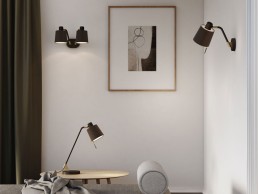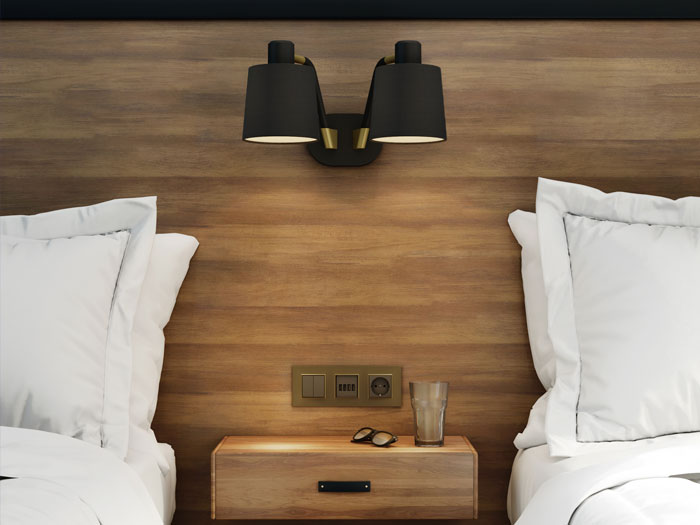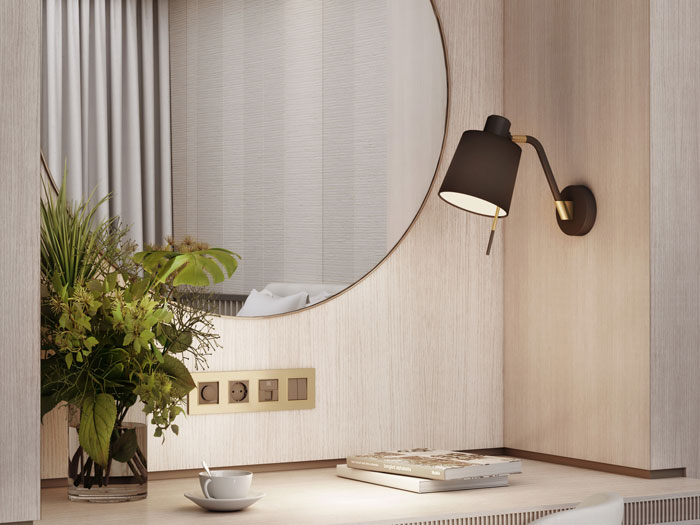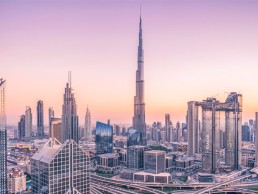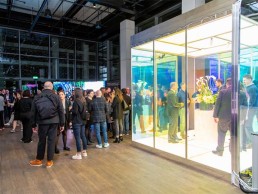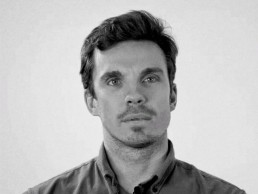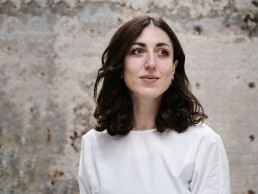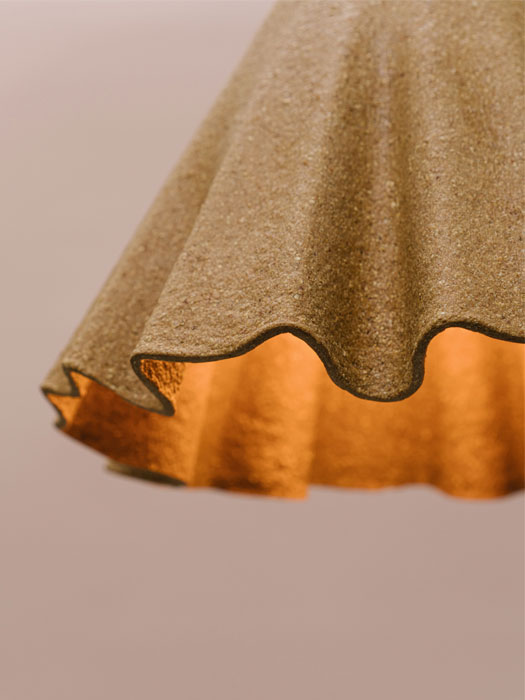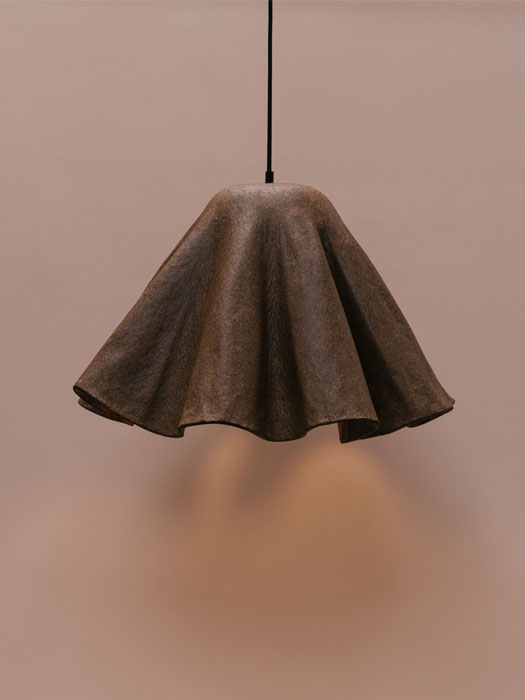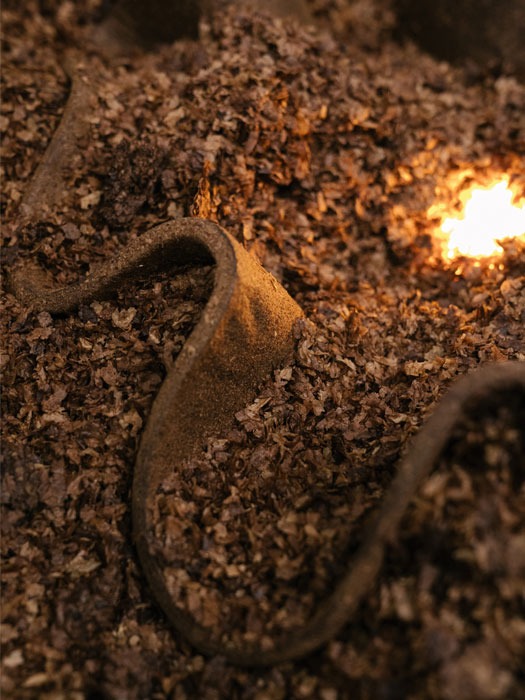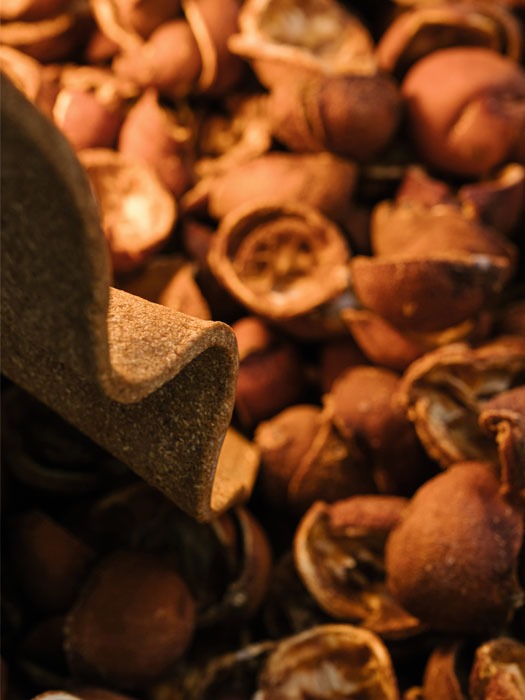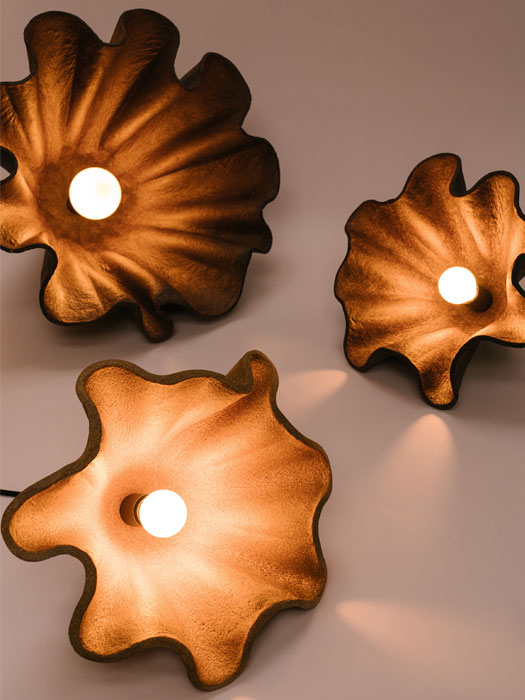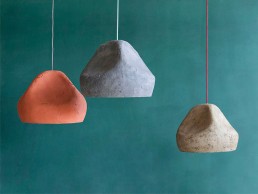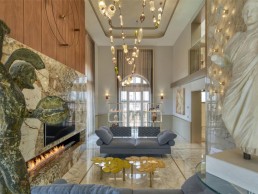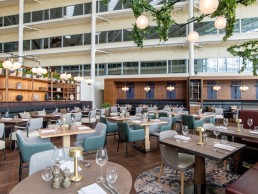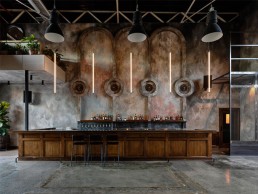Women in Lighting Awards Entry Closing
(UK) - The 2022 Women in Lighting Awards are closing for entries on 30 April 2022.
"We couldn't have foreseen the devastating impact that Covid would have on all our lives and when we decided to honour all the WIL and WIL supporters who had achieved amazing things during 2020 and the start of 2021, we never imagined that we would still be in a similar global situation in 2022," says the WiL team.
Whilst the WiL initiative continues to applaud everyone in the lighting community who have never stopped dealing with issues caused by the pandemic with regard to our mental health, our work, and our private lives, and have helped us to remain connected, it has decided to point the WiL Awards in a different direction this year and honour some women in lighting outside the sphere of lighting design - namely Light Art, Education and Research and Engineering.
Nominations for women working in these lighting fields, whose work you find unique, inspiring, worthy, and believe the community should know about, remains open until 30 April.
Submit your nomination here
Astro - Edward Collection
The Edward Collection by James Bassant, Founder, Astro.
What is the concept behind the Edward Collection? I wanted the Edward range to retain our core Astro DNA but with more scale and visual impact. Not purely minimal but also not overly fussy. Its decorative modern style has a timelessness to suit hotels, hospitality, or high-end domestic interiors with ease.
How long have you been working on the collection? From concept to completion it was around two years, but as with many of our designs, the Edward contains ideas that have been forming in my mind and sketchbooks for several years; coming back to them, refining them, until there’s nothing I would change.
Tell me about the design process and materials used. I often start with a single detail that holds a design together. In this case, it was the simple connecting piece between the base and the stem. Although a small detail, it is hugely important to give the range its unique individual character and visual signature. This is especially true on the desk light where I feel the component almost evokes a feeling of familiarity, a contemporary delivery but with the essence that it could be a repurposed old machine part.
What makes this range stand out from anything else currently on the market? It is attention to detail that creates good design and what makes an Astro product. On the desk light, although the base has an integral switch it was visually important that the cable exits from the tube rather than the easier route through the side of the base. Seemingly simple but a complication we embraced to ensure the product looks just right.
Another important difference with the Edward range was to offer our clients greater flexibility, so for the first time, we offer a range of metallic as well as fabric shades. The simple base unit can be paired with either a black or brushed brass metal shade or three fabric shade options, allowing for dramatically different looks depending on the combinations chosen.
Describe this collection in three words.
Bold, elegant, simplicity.
DesignLSM opens new office
(MEA) - DesignLSM opens a new satellite office in Dubai as its project portfolio continues to expand.
DesignLSM has worked extensively across the Middle East for notable brands, such as Emaar, Meeras, Al Futtuiam Group, Food Hospitality, and Al Ghalia, as well as introducing international brands to the region such as Sumosan, Nac Mayfair, and the Michelin star Galvin Brothers.
With its main office just outside of London, UK, it has over 50% of its current projects based internationally. A presence within Dubai enables the team to work closely with clients and suppliers as well as enhance relationships with local producers; offering clients more hands-on support whilst supporting the team’s strong sustainability ethos.
HD Expo + Conference announces programme details
USA) - HD Expo + Conference announces an illustrious lineup of speakers and thought-provoking topics curated by Hospitality Design (HD) magazine.
Over three days, from 26 - 28 April 2022, more than 150 design visionaries, innovators, and thought leaders will share their expertise on topics from market shifts to sustainability, well-being to new concepts, plus hybrids, workplace, and more.
Interior designers, architects, hoteliers, restaurateurs, owners, operators, developers, and purchasers are drawn to the annual conference to explore concepts and innovations that showcase the best of hospitality. Programmes will be presented on stages in three distinct areas located on the show floor: HD Park (#2873), DesignWell Pavilion (#4973), and HD Social Hub (#5726). Each area’s unique purpose, design, and programming—from panel sessions to keynote talks—foster an environment of idea-sharing and inspiration and enable attendees to stay ahead of global trends and on top of industry ideas.
HD Park shines a spotlight on immersive outdoor experiences while also serving as the home to all HD Expo + Conference CEU/LU-accredited sessions. Attendees can connect with clients and colleagues and hear case studies and conversational panels. Panellists include leading ownership groups and hotel and F+B brands as well as veteran and rising star architects, interior designers, and purchasers. Full Conference or Experience passes are required to enter CEU/LU-accredited sessions in HD Park.
Wellness and sustainability share the focus of the DesignWell Pavilion, designed by INC Architecture & Design. Attendees can learn how brands integrate wellbeing into their projects and products, and explore DEI-driven ideas for community building with the Hospitality Diversity Action Council (HDAC), alongside innovations in hospitality design that put the guest centre stage. Everyone is welcome to attend sessions at the DesignWell Pavilion without prior signup.
HD magazine invites attendees to lounge, recharge, and connect at the HD Social Hub, crafted by 21c Museum Hotels and featuring intimate conversations each day. Expo attendees can hear talks ranging from brands redefining the lifestyle market to Lodging Econometrics on their industry outlook and explore hot topics including designing with soul and business lessons learned from the pandemic. Everyone is welcome to attend the HD Social Hub sessions without prior signup.
Lutron unveils Prismatic in UK roadshow
(UK) – Lutron Electronics has introduced its new Lutron By Design Experience – Prismatic – to the lighting design community with two interactive events across the UK.
First hosted at Manchester Cathedral, and then at the Tate Modern in London’s Bankside district, the events allowed the UK’s architecture and design community to experiment with light in a bespoke, iridescent cube fit out with Lutron lighting and controls. The interplay of light and iridescent colour delivered an immersive experience for the designers.
During the events, guests were able to get hands-on time with the Lutron Lighting Designer App, to play with the system and save their lighting creations for the pop-up structure.
Prismatic is made possible by the Athena solution – Lutron’s simple and flexible lighting and shading control solution that puts the power to personalise light in the hands of designers and end-users. Athena marries best-in-class control, unparalleled flexibility, and a simple app-based setup in a lighting and blinds control solution that is ideally suited to handle the evolving needs of commercial spaces throughout the world.
“Lutron launched in the 1960s with the aim of creating technology that would enable individuals to control light, inventing the dimmer switch,” said Nicolla Farry, Specification Sales Supervisor at Lutron Electronics. “For 60 years we have been striving to provide the perfect light to our users. Prismatic provides lighting designers and the design community at large with the ability to manipulate light and experience first-hand the potential of Athena.”
Following the Manchester and London events, Prismatic will continue in Madrid, Paris, and Milan starting in April 2022.
Emilio Hernandez
The lighting initiative GreenLight Alliance works together to aid the lighting sector to understand their role in adopting and promoting the circular economy. It works towards industry standards that are universally recognised, trusted and sought-after. Emilio Hernandez, Founding Member, provides darc with some comment on their approaches and advice.
The GreenLight Alliance (GLA) has a regular piece in arc, and has now been invited to introduce circular principles in darc magazine. We’re focussed on creating a community to help the lighting sector understand its role in adopting and promoting the circular economy
Circular design sits under the umbrella of sustainability. At its core, its principles of ‘Reduce, Reuse, Recycle’ seem simple, but dig a little deeper and you become embroiled in topics such as policy, right to repair, eco design, embodied carbon, reverse logistics, warranties etc... (this is what I’ve spent the last 18 month’s doing).
It’s all hugely interesting and exciting to me not just because of the opportunity to reduce the mountains of WEEE (electronic waste) we as lighting designers contribute to each year but because I feel we’re reaching a plateau of how we add economic value as an industry, and circular economy offers a refreshing opportunity for relationships and conversations with new partners in different parts of the supply chain..
The best route to a circular design will vary and will be specific to the type of project and client you have. There isn’t a one size fits all in the same way that there isn’t just one way to value engineer a project. It’s also worth noting that a product can’t really be circular in isolation. This is a way of working and thinking not just a manufacturing technique and as such the project and indeed the supply chain need to employ these principles to ensure materials stay at their highest state of usefulness for as long as possible.
As lighting designers, recent years of focussing on ‘efficiency’ have seen us paint ourselves into a corner with the clients’ key perception of value being on payback vs capital expenditure, but there are some other ways that we can focus the client’s eye with regards perceived value. Here are some initial principles that we can follow as designers.
Below we have laid out some approaches to countering obsolescence:
Reduction: This is both subjective and objective. Aesthetic judgement on the how many lights we use & objectively using luminaires that either use less material or use recycled or reusable materials.
Products are increasingly being supplied with a Life Cycle Analysis or EPD (Environmental Product Declaration), which can inform you for the origin and embedded carbon of components, which is a more accurate way to determine a product’s environmental impact.
Product attachment: Countering emotional obsolescence by selecting timeless forms, factors or products that will be loved, liked or trusted longer is not to be underestimated. There are countelss examples of long lasting products that are not inherently durable but survive because they are cherished.
Product Durability: Addresses countering functional obsolescence by developing products that can take wear and tear for their designed life and beyond. We need to move away from a current trend of engineering out durability purely to reduce cost without considering the impacts on obsolescence.
Standardisation: The goal here is countering obsolescence of the lighting system through use of industry standard components, protocols and formats that will outlast a particular technological trend. There is an argument that this can actually add cost, carbon and sometimes complexity to a product but again looking at the designed installation life cycle as a whole is critical rather than just on a product level.
Ease of maintenance and repair: Aimed at countering functional obsolescence by enabling products to be maintained throughout life. Recent legislation means this ‘right to repair’ is a requirement and while this counters planned obsolescence in products, it requires proactive maintenance and goes against the misleading ’fit and forget’ motto that has been the selling point of so many LED upgrades.
Upgradability and adaptability: This is aimed at countering systemic obsolescence by allowing for future expansion and modification. As a designer we should be mindful of specifying products that can only ever be used in one application. So while custom beam angles, finishes and materials are great tools, its important to consider if these can be modified in the future of the product to have a second or third life. The end user or owner will also need to be diligent about who they approach for their repairs as quality and circular economy competence can vary immensely.
Disassembly: With real world recycling processes in mind, disassembly should be considered at the design stage. ‘Material passports’ are being developed for new products by more reputable suppliers and manufacturers, which will help determine this. Specifying suppliers who are part of a WEEE compliance scheme is the bare minimum that should be written into your specs for when fixtures do eventually reach their end of life.
I mentioned relationships at the start of the piece because I feel that a collaborative approach is the key to unlocking these new avenues. In promoting the Circular Economy we’re not trying to discourage other sustainable routes (such as energy efficiency or products made from waste materials) but to help people understand that while a circular product doesn’t need to ‘look’ different to a non circular one on the outside, taking the above steps, one at a time, to make the process more circular can have just as big an impact.
Lindsey Rendell
During 2021, the British Institute of Interior Design (BIID) launched a new Sustainability Strategy as part of its mission to become more environmentally conscious and to encourage the interior design industry to follow suit.
As part of its sustainability mission, the BIID released various documents outlining their Values, Strategic Plan for 2021-2024, and a Code of Conduct.
In its strategy introduction, the BIID quoted Greta Thunberg, saying “The climate crisis has already been solved. We already have all the facts and solutions. All we have to do is to wake up and change.”
Speaking on the strategy’s aims, former BIID President Lester Bennett and current President Lindsey Rendell say: “As interior designers, we are part of an industry that accounts for around 40% of the UK’s entire carbon footprint. Through our projects and businesses, small, considered changes could together make a huge positive impact on our environment and emissions.
“The climate emergency is one of the biggest challenges of our time and the BIID is committed to rising to this challenge. Our 2021 strategic aims include: ‘to further embed sustainability into interior design practice’, additionally the new 2021 Code of Conduct includes ‘lessen the environmental impact of your work and promote sustainability’.
“In February 2020, the BIID committed to become net zero by 2050 along with the Construction Industry Council. We believe the BIID can achieve this much sooner and have decided to audit our carbon footprint from April 2021 and aim to achieve net zero by 2023.
“We understand that for most, becoming more sustainable is a journey, one that many of us have been on for years and others may not yet have started. We also recognise that solving the climate crisis requires a collaborative force between clients, designers, suppliers, and governments. We have therefore produced a framework that sets out clear goals and actions, to affect real change at many different levels.
“We hope that by our members and industry partners embracing these goals and actions, we will achieve better design outcomes, increased business opportunities and will build a greater awareness of environmentally and socially positive options for their clients and colleagues.”
To fulfil some of these promises, the BIID has stated its commitment to Awareness – Knowledge – Promotion: “Build awareness of the Climate Crisis and the positive role members and the industry can have in response.
“Develop knowledge for members on practical measures, actions and policies they can adopt in their businesses and projects – in order to become more environmentally and socially responsible.
“And prioritise promotion, advocation and celebration of technologies, practices, materials, and products that improve sustainable outcomes – by members, the industry and the world.”
The report also identifies four key areas where members and the industry can create positive impacts. As a framework, they used the UN Sustainable Development Goals (UN SDGs) to set out how the BIID and reaching audience can operate more sustainably, benefit from more considered design, improve their business practices and contribute to the sustainable goals for our planet.
The first release to members is the BIID Sustainable Specifying Guide. This guide is intended to provide interior designers with broad knowledge of sustainability issues associated with specifying products, materials and technologies. It is a living document written by members, for members. At the end of the day, clients will have the deciding vote, however arming designers with the knowledge and ability to encourage positive choices to minimise impact will have benefits for the project and the wider world.
This document doesn’t link to specific examples of products or suppliers, instead it gives an overview of supply chain/lifecycle considerations followed by a series of useful questions that can be implemented into conversations with suppliers and project install teams.
The plan is to then release further information, organise events and create accredited CPDs over the next three years to provide interior designers with the tools, resources, and knowledge to promote, create and implement sustainable and ethical design.
Some of the questions asked as part of this document include: “Where do products and materials come from and how they are made? What impact do they have on their immediate and wider environment? What is the durability and ‘end of life’ for products and materials?”
An annual review will take place in April this year, with subsequent years receiving updates and new objectives as necessary, announcements of achievements, and where useful provide practical information on how members can also achieve similar goals within their practices.
“Interior designers have a unique role to play in contributing to a lasting and sustainable design industry,” added Rendell. “The BIID is committed to leading the interior design sector towards more sustainable design practices and as part of that, the BIID Professional Practice Committee researched how we can best assist our members with tools and support to do their work in the most environmentally and socially responsible way.
“As a result, we launched the BIID three-year sustainability strategy last year. Since then, we have published the first Sustainable Specifying Guide for interior designers, which was created to provide interior designers with a broad knowledge of the sustainability issues associated with specifying products, materials and technologies.
“We have also increased our CPD content on sustainability topics to help designers to grow their knowledge on this vital and wide-ranging subject. This includes our Sustainability Showcase event on 30th March that will be a full day virtual conference of exciting talks from sustainability experts in the interior design sector.
“It has never been more important to show our commitment as an industry to sustainable design practices. Our role as designers is to advise our clients on the environmental and social impact of their projects and we hope these BIID initiatives will help designers to do that.”
Oksana Bondar
Oksana Bondar, Director of Design at Biohm, is a Russian designer and innovator. She sits down with darc Editor Sarah Cullen to discuss her journey from marketing and PR into bio-engineering design for sustainable products for the home.
Growing up in Perm, Russia, but born in Taldykorgan, Kazakhstan, Bondar began her professional career in marketing PR and media. “Product design and industrial design, which I was obsessed with, wasn’t an option in Russia, hence my other creative choices took me to marketing,” she tells darc. Pursuing this avenue, Bondar moved to Prague to complete a Bachelor’s degree in Communications, Mass Media & PR at The University of New York. She then moved to the UK and rediscovered her design-led passion. Here she completed a second degree in Product and Furniture Design at Kingston University in London. “It was in the UK that I discovered the design discipline and had to go back to uni to re-study,” she reflects.
A core value that has run through Bondar’s life is to be as resourceful and kind to the planet as possible. “The passion to change things for the better has been with me all along. It was when I was at uni that I started looking into my professional industry and realised how incredibly damaging and destructive it is. For me, being very passionate about making things to be better meant I couldn’t go down the route of normal design practice. I believe designers and materials and the materiality of things are interconnected.”
A few years ago, Bondar attended a talk held at the Design Museum, London, by Artist Zoe Laughlin, which sparked a realisation of the type of designer she wished to be. The talk revolved around designers who are farmers of their own material. “That was exactly how I would identify myself. You become an innovator, because you are looking into ways to turn abundant waste matter into something that is valuable using all your traditional training as a designer. Then, the more you learn about it, the more you understand it’s not just about waste, it’s far bigger than that. It’s about biomimetics and ways that nature solves these problems. There’s no need to reinvent the wheel! All these solutions are out there, we just need to learn to look for them. In nature, waste is non-existent. When something perishes, it becomes fit for something else – for a new life, and it’s continuous circles.
“That was my journey. All of my work started from uni, and since then has evolved around innovative materials derived from waste and transforming waste streams,” she explains.
Bondar went on to be the Co-Founder of Luna Lab, a circular design studio that aims to design out waste and reimagine products, services, and system. She then joined Biohm, firstly as the Business Innovation Manager, and then onto the Director of Design.
Biohm is a London-based innovation studio that was founded by Ehab Sayed, a designer, engineer, researcher, and entrepreneur, to bring the principles of biomimetics into the construction industry by adapting and applying the ingenuity that is found in nature to our built environment. Its aim is to revolutionise the built environment, and the way businesses are conducted, through the development of bio-based materials, circular construction systems and innovative business models. At a time of climate crises, it believes radical change is needed, requiring systemic innovation on a large scale to re-address the multifaceted issues interwoven in economies that have led us to where we are now.
“If we are to venture beyond merely reducing our impact on the planet and our health, contemporary approaches to waste management, manufacturing and building must undergo a step-change towards having a positive and regenerative impact,” says the studio.
“Our goal is not only to build a successful company, but moreover, to improve the quality of people’s lives through enabling the use of healthy, environmentally friendly, circular materials and building solutions for applications across the design and construction industries, eliminating the concept of waste and demonstrating how business can equitably and ethically work in collaboration with the natural world, industry, academia, government and community.”
More than 5,000sqft of space is dedicated to Biohm’s warehouse, lab, and offices, which together form a biomimetic research hub. Working with industrial partners, it repurposes waste materials and industrial by-products into useful materials. Whether it is through myco-remediation processes or using its unique Orb binder, it now works with a wide range of organisations across London, including a number of councils, research institutes, educational institutes and businesses.
It produces two unique materials: Mycelium and Orb. Mycelium - the vegetative filament root structure of mushrooms - is used to grow Biohm’s materials using organic and synthetic substrates that are the by-products or ‘wastes’ of other industries. This material has been used to create the world’s first accredited mycelium insulation product.
Orb - organic refuse biocompound - is manufactured from difficult to reuse or recycle by-products, utilising resources that would otherwise go to landfill. Biohm converts one of the world’s fastest growing waste streams - food waste - into valuable and functional materials that can be moulded to create 3D products. Orb is 100% biodegradable, vegan, sustainable, and renewable.
“Biohm was established just five and a half years ago,” says Bondar. “Founder and Director of Innovation, Ehab Sayed is my personal twin - I have never met a person who was so like me. We finished each other’s sentences, it was that kind of connection.
“He established Biohm for various reasons, but it started for him back when he was doing his Master’s in engineering. The design profession evolves a lot around problem solving, or finding better solutions to problems, or better ways of doing things. The problem he was looking into was waste and waste in construction.
“That evolved into the solution and construction system that had biomimetics embedded into the design, but it was also solving the problem of waste, as in on-site waste, waste when buildings are being built as well as when buildings are being demolished,” she continues.
Bondar recounts that once Sayed began prototyping and evolving his construction system, he realised the materials he was working with were either produced by “greenwashing brands or products that were deemed eco”, but when researched further, they were sometimes proven to be “worse than synthetic materials or plastics”.
This ethos of sourcing or creating unique materials that are truly eco-conscious is something that runs through all the team members at the Biohm studio. The current team is formed of people from various professional backgrounds including designers, engineers, scientists, and lawyers with business backgrounds. “We all start from a point where we’re obsessed and passionate about the problems and finding the solutions. And the problems and threats are to all the creatures and life that walks the earth. Waste is just one of the prominent ones,” explains Bondar. “That’s what’s beautiful about Biohm and how it came about. It aligns with an individual’s passions and ideas and impacts that we all want to achieve.”
When asked about how she accrued all her technical knowledge after jumping career paths from media to design, Bondar expands: “I came into Biohm when it was fully established, having gone through the same journey myself previously. That’s why it was such a beautiful merge because I was doing the same thing, just separately.
“In the early days, I was researching and studying myself; it was self-taught chemistry and biology. And then I would reach out to people when I was stuck. I remember when I was experimenting with materials at uni, I reached out to the chemistry department for help and got a great response. People were fascinated because it’s not often they end up in a room with a designer. I also needed help to build a machine, so I went to the engineering faculty where Formula One cars were built. There I was with a little design for a shredder and asking questions about a motor I had bought from eBay that came from a conveyor belt!
“I think it’s an agility and passion that drives you either to reach out or pick up a book. And, I think it’s fascinating that suddenly your design becomes ever more important and valuable, because it’s no longer aesthetics or trends that define it.”
Mycelium insulation is the primary export from Biohm, however last year it launched its first ever commercial product, a lighting range, that harnessed its unique and sustainable materials. The Obscure lampshades are created using its Orb material, consisting of orange peel and coffee chaff (the outer skin of a coffee bean that is removed when roasted). Wanting to expand their expertise into objects that are more accessible to wider markets and are suitable for homes, offices, restaurants, and more, the team’s first instinct was to create a light product. Bondar expands: “Lighting was the first option because it seemed an easy-ish product to look into in terms of matching our material and our capacity to design and produce it.
“We began by looking at how nature forms things. For example, when leaves get wet, they become moldable and take the shape and form of what they wrap themselves around. That, in addition to gravity and all other natural forces that surround us, impact the various matters into a shape. And that’s exactly how our lampshades are made.
“Typically, shapes are created when matter is injected into a mould, but for us our mould is like a skeleton. The material is layered on top of it, and it forms itself. This means each lampshade is completely unique, and in some ways design-less. This is how biomimetics comes into the design; nobody is holding or forcing the shape.
“Designing becomes very involved and as the designer you are the driver that determines the shape and finish; you determine everything. For us it’s not an ego-driven approach, it’s more of a collaboration with the material that we are respectful towards.
For the Obscure collection, a local office building approached approached Biohm with an abundance of orange peel as a waste product from their high production of fresh orange juice. “Orange peel is very problematic,” says Bondar. “You wouldn’t think so, but it is due to its acidity; it can’t be composted because it destroys pH levels in soils. But, for us it works amazingly well because of the chemical composition. It’s got peptides and other chemical compounds in there that makes it elastic. So for lampshades, when you work with it when it’s not cured, it’s kind of rubbery. It likes falling and forming and shaping over things, it’s just brilliant. The colour is quite interesting as well because usually natural materials are very earthy, this one is a little different. We’re also looking into pigmenting it as well and developing a bit of a colour palette.
“Coffee chaff is the same, it too is very acidic. This material is incredibly beautiful and has such a deep chocolate colour, and to work with it’s more leather-like. You could see when it forms itself, in the crevices, they actually have wrinkles like an elephant foot - they have such unique personalities,” she describes.
In order to turn the waste substrate into a workable material, Bondar explains the various techniques they use including chipping or granulating. Coffee chaff doesn’t need to be processed as it is suitable in the form it already arrives in, whereas fresh orange peels need to be broken down into smaller pieces. These elements are then combined with a bio-based binder as a hardening component that the studio developed. This ensures the product is completely natural, and even ranked as food-grade, although Bondar doesn’t recommend eating it because “you would break your teeth”. This part is then combined with a filler, fibrous cellulosic substrate to form the final material used to create the lampshade.
“Once the lampshade is formed, it is then cured. This can be done simply via air-drying or to meet our target of batch production, we custom-made a dehydrator that is super low on energy consumption; it’s not an oven or a kiln. It just speeds up the drying process.”
Mycelium is a secondary material that the studio is experimenting with to produce a follow-on lighting collection that is scheduled to be launched later this year. Mycelium is a living, breathing, moving and growing organism that will present a very different final product. Again, lamp production will follow a similar process to that of the Orb-based Obscure collection, as the mycelium material has a character of its own; it cannot be forced into a mould, yet will form naturally, growing inside a mould. “ The concept was called self-formed finding; it’s a biomimetic approach to design,” explains Bondar. “In nature, when cells or bubbles in water accumulate, they start to form themselves and accumulate. “It’s very complicated - I was reading biology books and discovering how things grow and form in nature - and then I looked into the root concept and how I could use that in what we do here at Biohm.
“It’s matter with other matter,” she continues. “And because of the properties of the material, it is a structural and dense form that can also act as an acoustic absorber.
“The Mycelium lamps are currently prototypes, with final prototypes ready at the end of this month.”
For the time being, the team will continue to use both the coffee and orange materials due to the high quantities of local waste streams available to them. However, with a strong recipe in place, the possibilities of exploring other bi-product waste substrates is always an option to create variations of lampshades.
With a strong focus on the production of the lampshade materials, the other components of the lighting fixture as a whole were also a large consideration in the beginning of the design concept. “The brief was so ambitious that we actually weren’t even looking into light sources at the beginning. There are so many mushroom species, for example, and some that are bioluminescent. We were looking into ways to not have electrical lighting, but instead maybe tap into the ability of an organism to glow in the dark,” she explains. “We also looked into the natural ability to bounce light. But we realised a lot of that was very complex and would need years of research and development, so it was parked.
The use of natural-based materials could be a concern for some in terms of the product’s longevity, but Bondar reassures that the material is made to last. “I don’t have a number for longevity, but our products go through in-house and third party testing against relevant standards and mechanical properties,” she explains. “The lampshades have gone through mechanical testing and flexural strength testing. The material has similar properties to plywood and mdf if the waste stream is fibrous. So it’s very strong, it’s not going to just crumble and fall apart.
“Furthermore, in-house we test for environmental conditions. The lamps will sit in a tent with 88-90% humidity and a lot of heat, and they’re absolutely fine – it’s crazy!
“These are not realistic environments however; we wouldn’t recommend people to take them into the tropics or under rainfall. They’re not IP-rated so not suitable for bathrooms or outdoors. We’ve also done impact testing by throwing it down and bumping into it and it’s proven to be a very sturdy material. These are all stress tests to push the product to its limits.
“In terms of the mould, again, we do a bio-resistant test where we expose materials and products to contaminants. They sit in a chamber with mould, yeast, and a lot of bacteria. The orange peel and coffee chaff, because they have a lot of natural acids, repel all bacteria and mould naturally.
“We also have a natural top coat we add that is a mixture of linseed oil and beeswax that protects it further, although we are trying to replace beeswax with plant-based wax or just oils.
“The way these materials behave is very similar to wood. If you were to get it wet, it would mark and potentially grow things – or like an outdoor table, for example, typically has things growing on it. It just needs a bit of extra care or housed in an environment that it thrives in. It also inspires good culture for a respectful attitude to things around us.
“If you did change your mind or re-decorate, Biohm takes materials and products back. The Orb material can be shredded down and re-moulded, so it’s infinitely recyclable; or it can be recirculated either back into a lampshade or something else. And Mycelium is the same, but it eats itself! It would find nutrients in itself as a cured material, shred it up, feed it back to the life organism and it would consume it. For us, it’s a value to take a product back and use it as a substrate again.
“The trend in recyclable fashion - as long as there’s businesses and systems, infrastructure, and technology, and places to deal with it - is fine. But at the moment, current materials, infrastructure and tech is not fit for that and that’s why longevity is a bit of a playing card. It’s the same when you look at nature - seasons change, trees lose their leaves and they grow back again. The change, trend and fashion is there, but it’s not too shameful so long as we can deal with the cyclical trends.
“The world is different to what it was 5 years ago,” she continues. “My work used to be called art because it was funky; nobody saw a reason to do it. But, as a company, we are speaking to some of the biggest multinational companies that are looking for answers to questions that we have been talking about and working on for a long time. We are now the key holders. People are interested and passionate about it, they want to change.”
In terms of sourcing all of the components for light fixtures, Bondar claims it has been a painful experience to find products that match their strict sustainable ethos. “There is not much out there that matches our militant our approach or ambition,” she says. “We have been looking into wooden fixtures, lampholders, as well as ceiling roses, but I’m always suspicious of what people declare their product as, and tracing down the supply chain can be difficult. They could say that they’re working with European companies, but actually their components are made in China. So all of a sudden, your product or the components that you’re getting from your partner, company or supply, actually have a breached supply chain.
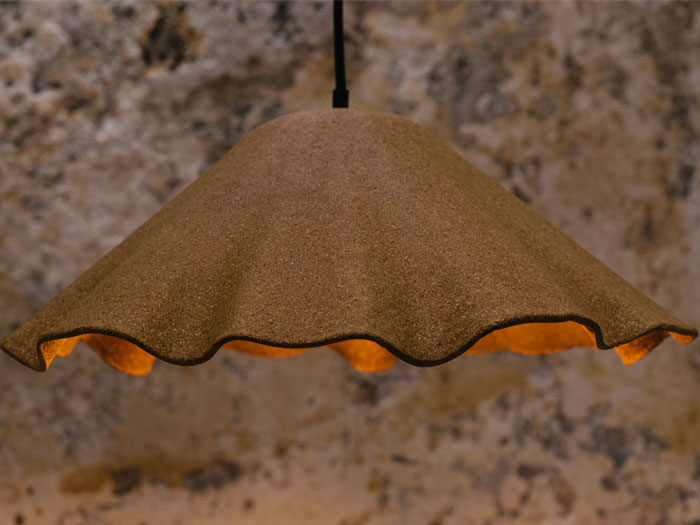
“We’ve procured as militantly as we can for now, but we always plan to build on that, and keep a close eye on what’s available. This is not something that we do, and maybe can’t do. But coming across new technology like OLED excites us, but they’re not readily available to us at the moment.”
Moving forward, Biohm is opening a new warehouse facility on the outskirts of London. The space is mainly dedicated to the production of its insulation products, however the hope is for embedding other product lines and technologies in one large factory space.
“The big idea is starting with the Mycelium insulation but then potentially having hubs, hyper-localised (zero travelling miles) everywhere. That means we are able to draw on the local waste streams as well as help communities thrive and take control of their prosperity locally.
“However negative Brexit is, it does kick-start this sense of pride and not turning your eye far away but looking right in front of you and seeing how amazing it is. Individuals and professionals turning back into their communities is fabulous! We call it ‘Glocal’ - working with local formulas, systems and ways of working but implementing globally. By doing so, you have figured out how to set up a manufacturing facility that draws on local resources, waste streams and people, and give them the power to do it and make money for themselves and livelihoods, as well as play in the economy and industry. That model can work anywhere in the world.
“We are still finding our feet for ways of distributing, or wholesaling, or sending our lighting products to a design shop to retail them. I think we will launch within our own network for the time being, but we also want to give people the opportunity to experience the materials, innovation and products. We are looking into hosting a once-a-month open door event as we have a lot of requests for a showroom experience. Hopefully there will be an option to do a product launch on one of these evenings,” she concludes.
Natural Forms
Maria Fiter, Founder of Barcelona-based studio Crea-Re, talks to darc about her new collection, Sensi. Inspired by parts of the human body, the new range of lamps are eco-friendly, using paper waste to form the main body of the pendant.
The Sensi collection, created by Maria Fiter of Crea-Re Studio, is a selection of lights that are self-dubbed “ecological, aesthetic and colourful”, inspired by the organic curves and movement of the human body. Each individual lamp comes directly from part of the body.
Fiter caught up with darc Editor Sarah Cullen to discuss more of the influences of the collection and how she solely created it.
“It is not obvious which lamp comes from which shape. I don't like obvious and easy to read things. They don't leave a space for the imagination. My lamps have abstract shapes and I don't reject any interpretation.
“The thing I like the most when talking with people about them is that most of them realise it is something connected with a human shape. People don't know what it is, but they feel it. This is what I like the most, when my message gets to the observer,” she says.

Despite their natural forms, these lamps turned out to be the most complex in terms of shape for Fiter. “The most difficult was to create a large scale of the bozzetto in clay and then make a mould for it in plaster. The Sensi I lamp has a plaster mould that consists of five pieces. It is necessary to divide the mould to be able to take out the papier-mâché lamp.
All of Fiter’s lamps are made with paper waste and cellulosic glue. Combining these two materials, Fiter creates the papier-mâché, which is then painted in natural, earth pigments.
“Papier-mâché, when dry, is very solid and resistant. It is not like normal paper but much more dense and stronger,” explains Fiter. “I like to use this material because it is ecological and easy to work with.
"I can make any desired shape and colour. It provides a lot of possibilities.”
Fiter uses paper that she purchases from locals in Barcelona that work with segrgation of waste: metal, wood, electronics, and paper.
"The newspaper I get comes from the recycling centre. The best paper for papier-mâché is the simplest one, not plasticised or thin, which I would deem as bad quality paper. It has to be easy to blend with a blender that I use to make the paper powder."
For this particular Sensi collection, Fiter used a technique that is typically used by sculptors. “First, I made a positive form in plaster, and then a negative form in clay. This allows me to repeat the shape of the lampshade many times,” she explains. “Even though the lamp has the same shape there are always some variations with the surface. So each lamp is different and unique; it is not possible to make the same piece.”
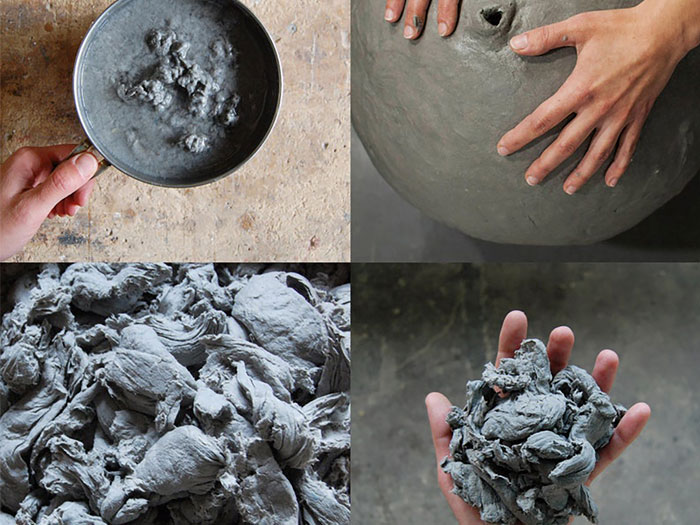
Describing the length of the process, she elaborates on how the collection was formed in a matter of months: “First, I was preparing many small buzzettos in clay. Then I chose three forms that I liked the most. After that I was preparing each form on a large scale in clay and casting it in plaster. When the plaster mould was ready, then I could prepare papier-mâché and make a lamp. Usually the process of drying takes around a week or two.
“Then, when the lamp is ready, I need to sand it and paint it. I have a special technique to paint the lamps with natural pigments that is quite laborious but it makes an amazing effect. The lamps have a few tonalities of the same pigment. The darkest ones are in the cracks and wrinkles on the lamp surface. The rest of the lamp is more bright and delicate.
"I discovered the technique I use for painting my lamps by accident - by mistake. I was painting the lamp and accidentally stained it with a different colour than I had intended to. Wanting to get rid of it, I started to wash it with water immediately. I noticed that I got rid of this bad layer of paint plus the underneath layer. To fix this, I re-painted this area but it turned out very badly. So, I washed the whole lamp and I ended up getting this amazing effect with a varied tonality on the surface of the lamp. There were some darker parts in the holes and cracks of paper as well as brighter areas.
"I loved this effect and started to implement it in many of the following lamps I created."
To create the earthy-toned colours, Fiter buys her paint pigments from Poland. "I have one brand that produces my favourite pigments called Kremer, which I always gravitate to and bring with me to Spain," she says.
"I love earthy colours because they are so natural and look great in
interiors, and they suit my paper lamps. However, I also love strong colours, for example dark ultramarine (Ives Klein blue) which gives life to every space."
Due to the scale of these pendants, Fiter believes they would be best suited to larger spaces in order to fully appreciate their visually strong presence. “It is like a statement lamp, it brings attention to the viewer. I see this lamp in some high and large spaces. It looks very good above the dining table in the centre of the room, or in a wide hall entrance.

“This collection is more elaborated in terms of form and it is more sculpturesque,” she comments on how this collection differs to other pieces from her studio. “Each side of the lamp is different so you can admire it from many points of view and change its position. In this way the same lamp looks different and is more interesting. Working with light is making our lives brighter.”
Private Residence, Italy
Studio Marco Piva completed the interior design scheme for a unique private apartment located in the heart of Padua in Italy. The design blends old and new with bold lighting elements to tie it all together.
Situated in the heart of the historic centre of Padua, the private residence benefits from beautiful panoramic views of the city with an abundance of daylight flooding through its large original windows.
TThe team at Studio Marco Piva were tasked with creating a contemporary design that incorporated and complemented the residence’s original Art Nouveau architecture. The client gave the brief to create a refined and elegant home environment that is modern yet complementary to the monumental features of the building’s pre-existing works of art and finishes. It was also important to the client to retain certain pieces of classic furniture that possess a high sentimental value.
Marco Piva sits down with darc Editor Sarah Cullen, to discuss the design choices, and in particular the decorative lighting pieces selected, for the project.
“We already had an established relationship with the client as we collaborated on a project in the past. In February 2019, he approached us again to complete the interior design of his new house in Padua city centre. Work began in the Summer of 2019 and finished in Spring 2021.”
According to the client’s brief, the studio had to complete extensive research focused on the dualism of old and contemporary in order to provide a design that integrated, in a fluid and natural way, the historic pieces of pre-existing furniture with the new elements.
“The objective was to achieve a long-lasting, functional and sophisticated space, rich in details that emphasise the exclusivity of the overall project,” Piva explains.
However, working in the beautiful historic site brought with it some challenges for the team to overcome. “The main challenge of the project was to develop a functional continuity between the strong architecture present and the interior design in accordance with the requirements of the client.
“The design, studied closely by the studio, emphasises the existing architectural volumes, recalling the historical and Liberty architecture of the building that houses it.
“Careful chromatic research went into selecting a contemporary but not invasive colour palette; a trend-colour range that doesn’t go out of fashion over time.”
One of the key elements that was considered at the very beginning of the design process was the lighting. Statement pieces were a must in the public spaces, and technical lighting was used to bring subtle functional lighting to task areas as well as to create bold illuminated wall features.
“The role of decorative and custom lighting was, first of all, to give a touch of personality and atmosphere, but also to find the perfect harmony between the architecture of the place and the choice of furnishings.
“Both the decorative and the technical aspect relating to the use of light were a key element in the whole design process, with regards to the strong natural light that penetrates through the full-height windows in the apartment.”
Notably, in the living room, the team wanted to create a “scenographic and sculptural installation worthy of the historic building where the house is located”, which resulted in the bespoke installation, Collier, from Italamp.
This eye-catching chandelier, according to Piva, is “a majestic composition that reaches a height of three-metres, inspired by a large-scale bijoux and arranged in five suspended rows on which a sequence of blown glass elements, each characterised by different shapes, decorations and colours.”
“Each component is a unique piece, with colours customised and selected ad hoc for the project - agatha, dove grey, smoked, olive green, teak - where the glass seems to come alive in curves, textures and friezes that recall the ornaments of a precious pendant. The chandelier gives personality to the space and illuminates it through LED sources positioned inside each element, diffusing a delicate light filtered by the colored and decorated glass.
“The relationship we had with Italamp and its R&D team was fundamental to achieve these results thanks to their attention to detail and the deep technological research done together to conceive the custom chandelier, and also their respect for the given budget without sacrificing aesthetic and functionality,” he adds.
Elsewhere in the living room, six Caterina wall lamps from Italamp were chosen in custom-colour versions that match the palette of the interior scheme. “The wall lights are characterised by an aesthetic with retro references and by a simple but refined design: the metal structure is proposed with a brushed gold finish while the diffuser is articulated into two specular domes of different sizes, one in opal white glass, which contains the LED source, and a lower one in teak-coloured glass,” says Piva.
Kreoo marble sheets are backlit by Fabbian Impianti Group fixtures as a custom piece of illuminated artwork. “The stone material is presented in an unusual duality, solid and dynamic; an investigation into the ratio between matter and light. Marble elements uniformly disperse the light with a scenographic effect.”
Further backlit Honey Onyx panels from Marmi Orobici Graniti are located in the entrance hallway. “The custom backlit marble panels, with their transparent / reflective finishes, create unusual effects of light and shadow,” explains Piva. “The LED lighting behind the panels can be controlled and managed, with different intensities and colours, to create attractive experiences involving scenarios and atmospheres for any time of the day.”
In the dining room, Italamp’s Greta suspension fixture is reminiscent of jewels reinterpreted into a contemporary design, with a central tubular body with surrounding spherical pieces of varied sizes in carved crystal. Three pendants with five spheres were placed in a row in an elegant, symmetrical line.
In the son’s bedroom, an IC suspension lamp from Flos was used to break up the rigidity of shaped furniture.
“The choices between chandeliers, pendants, appliqués and technical lights are different in the various spaces of the apartment, depending on the focus points or elements we wanted to emphasise with light,” explains Piva.
“For example, the iconic custom chandelier produced with Italamp and the Greta pendant lamps were used in the more public and relational spaces - the living and dining room.
“Architectural light was used mainly in the entrance and bathrooms, while the rest of the house, with its double-height window, allowed us to exploit the power of natural light. In those areas we have played mainly with decorative sources.
“My artificial light choices, both decorative and architectural, try to learn from natural light. Sometimes it’s a simple, soft light, while other times it can be highly theatrical, but it always comes from the search for an intrinsic dynamism, connected to the placement and specificity of the sources,” he continues.
Despite its historic foundations, the team didn’t face any structural constraints when installing fixtures. The only piece that needed extra attention and consideration was the bespoke living room chandelier, designed with Italamp. The Murano glass used increased the weight of the piece considerably, so Piva and the team worked closely with Italamp to manage the best solution for its suspension.
Reflecting on the project as a whole, Piva reiterated the importance of the role of lighting and its consideration at the beginning of a design journey. “Beside the intense research that we have carried out to find the best, appropriate and durable materials, the light was one strategic element I wanted to use extensively in this project.
“It has been a fundamental step in conceiving the overall design by integrating the light from the earliest planning stages, playing with it and all its expressive possibilities.
”This scheme is able to integrate, as much as possible, the lighting into the fit out interior design elements, hiding the light sources where possible, and only making visible the final lighting effects that characterise spaces.
“This approach has permitted us to emphasise the feel of magic, astonishment and emotion of lights that occurs when the architectural elements are less visible, but enhance the richness of materials, textures and colours.
“I have brought hints of modern and contemporary into the historical building; an exclusive home, completely custom-designed, that features detailed bespoke designs in all the rooms.
“Precious materials and unusual finishes are combined within the lighting sources, creating an original play of contrast where innovation combines with the magnificent history of the place, as for the given brief and our initial ideas.”
Hilton Hotel Heathrow Airport, UK
The Hilton at Heathrow Airport received a redesign by interior design consultants Hirsch Bedner Associates in 2021. Matteo Pace, Associate at HBA, discusses its design approach with darc to tell us about their design approach to the public spaces.
The concept for the redesign of The Hilton at Heathrow Airport is centred around connecting guests to the great British landscape with a “view from above”, inspired by the sights captured when flying in and out of the airport.
Building on the existing architecture, HBA’s new design included a full refurbishment of the ground floor entrance lobby, café, bar, and restaurant. “We started the project in November 2019, and completed it at the beginning of April 2021,” Pace tells darc. “The initial briefing was to create a synergy between the landscape, and the view from above. This concept was the starting point and direction that Hilton wanted us to go towards.
“The brief was very clear from the beginning and well received by our team, so we didn’t face any major challenges when developing this project. We were brought in to enhance their preliminary ideas and bring our expertise to the fore,” he explains.
Elektra Lighting was appointed to work on the project by the hotel as lighting consultants to aid the design teams with the overall scheme. “The hotel appointed Elektra as we had worked on many projects for them before, we were fully familiar with the brand’s standards and had a wealth of experience in independent restaurants,” says Neil Knowles, Director of Elektra. “This experience was very important as T4 was one of the first sites for the new Hilton F+B concept, Oxbo, so the lighting was to some extent left open to interpretation.”
Pace continues: “Each of the spaces reflect a different element from above, whether it be breaking through the clouds to see the greenery of the trees with soft lighting in the countryside to reaching the city, which is reflected with distinct and dynamic lighting features. The lobby evokes the city/urban perspective with street-styled lighting. Giant pendant lights hang down as though they are directing the flight path, acting like large signage for a plane. The middle area is the bar and café space, which demonstrates the rural view from above. Softer tones and lighting are placed with intimate moments such as by the chef’s table. Finally, the restaurant reflects the sort of hidden places that one can’t quite make out from above and so the aesthetic is darker and cosier. The lighting gives an added layer to create a moody kind of ambience.
“Finding a balance between natural and artificial light is an element that one can tend to overlook. The Hilton space is vast and so the natural light can have a big impact on the colours. They look most vibrant when the sun sets and the lighting is adjusted to set the mood. Understanding the benefit of natural light in conjunction with artificial light with design is crucial when planning a space,” he adds.
Pace believes that lighting was a key item when it came to the final design, and that the team had to explore ways of manipulating it sculpturally as well as in a soft, decorative way. Being able to create moments of cosiness and intimacy in the vast open space of the airport terminal was just as important as creating eye-catching centrepieces.
“From a lighting point, the space represented a challenge,” reflects Knowles. “The main reception, bar and restaurant are all located in a five-level atrium, a huge open space that was also painted entirely white. This does not make it easy to create an intimate atmosphere and from the start, we were focused on this.
“Lighting in the bar is largely built into low level items – all the planters have at least three light sources (uplights to trees, linear under plinths, linear around plant beds to make plants glow). The bar is lit in every shelf both front and back bar, as are the kitchen servery units.
“In addition, free standing steel frame elements have tiny little spotlights built in (the size of a small lipstick) to add accenting and focal points. These are used both for servery display areas and to add spots to table tops in the restaurant area.
“The floor finishes were retained in some areas and we wanted uplights to many of the decorative screens that separate areas. So these were designed to have small plinths detailed in, and these plinths include small floor recessed uplights.
“The interior design required a lot of decorative lighting to create focal points in the space and these tended to be oversized pendants, creating artificial ceilings.
“Lighting is, of course, all on a modern dimming system with multiple scenes set over the day to accommodate the varying needs and uses of the space.”
Pace explains the importance of working with a lighting specialist on projects, and how flexibility is key to the success of a collaboration, particularly as HBA work on highly bespoke projects. “We work with lighting designers all the time, and for this particular project, we worked with Elektra Lighting. Working with lighting specialists is a highly important part of the job. Lighting designers tend to follow the brief and nothing really changes once we’ve discussed the items required in a highly detailed fashion. You also have to find the right manufacturer that can produce specialised elements with quick turnaround time and luckily we know some excellent people in the industry.”
Nearly all of the decorative lighting pieces were made bespoke for HBA, with Imagin Lighting providing a large proportion of pieces. Penta Lighting created fixed lamps for the balustrades in the restaurant and Flos supplied the unique lamps and wall lights.
“The areas were divided up based on different perspectives of the ‘view from above’,” says Pace. “One perspective is from the standpoint of the plane landing, so this impacts the surroundings and therefore the lighting. Part of the design process included designing lighting to create unexpected vignettes.
“The lighting is part of the architecture. It became part of the interiors as a structure and an integration of the elements and joinery.”
Despite not facing any initial challenges when designing the brief at the beginning, unfortunately the team struck obstacles when it came to the installation, which coincided with the global pandemic. Pace elaborates further: “The original brief didn’t change over time, however, the project was underway during the Covid-19 pandemic and so this did pose challenges. Design teams were ever-changing and so trying to connect our ideas with teams that didn’t stay the same throughout the process was at times difficult.
“Given time restraints, we had to be fast when working out elements such as weight within the architecture. Co-ordination and adjustments were key. Another major issue was the ceiling height, as this created issues such as hanging statement chandeliers and feature pendants from significantly high reaches.
“Despite all of this, we managed to orchestrate the principal ideas without affecting the final design.”
Upon reflection of the final design, despite the challenges it brought with it, Pace was very pleased with the outcome. “We were very happy with the final result. An airport hotel is completely different to typical hospitality structures. We have been able to create something that is quite ambitious. I think that with the considerations that went into the space and lighting, we have created an elegant and atmospheric space.
“We never produce the same projects; we don’t do roll outs of projects. Each development is always very different, which of course brings varying challenges. I really enjoyed working on this brief as it isn’t something you see every day and had a very clear concept.”
Stomping Ground Morris Moore, Australia
Ambience Lighting faithfully restored lighting elements in this new Melbourne-based beer hall, matching the rustic yet contemporary interior design scheme by Studio Y and PlaceFormSpace. David Justice of Ambience tells darc more about their role in the project.
Melbourne-based interior design firm Studio Y and building designer PlaceFormSpace transformed an old cigarette factory boiler room into a unique beer hall, Stomping Ground at Morris Moor, situated amidst an outer suburban industrial and residential area of the city.
The Stomping Ground brewery needed to be a welcoming, inclusive, and energetic gathering place for locals to enjoy, while incorporating resourcefulness and sustainability into the core of its running and production.
The existing conditions and relating structure of the current building had to be carefully investigated and incorporated into the architectural design. The large site meant that zoning had to be exceptionally considered to ensure sections felt intimate but also retained the open-plan beer hall experience.
The large structure remained open-plan, with finishes staying mostly untouched to create a contemporary and industrial aesthetic that took inspiration from the original factory.
“A mesmerising full-height timber grid structure is the main architectural feature; it was designed to be modular and exposed, visually linking the outdoor and indoor spaces,” describes Studio Y. “Internally it serves a practical purpose, carrying services such as lighting, AV, brewery mechanical equipment and beer pythons, with planters as a secondary functional use. Externally, the grid is used to support retractable roofs, translucent roofs, and walls. Intertwined with the landscaping, it allows the space to develop character and evolve over time. All connections are bolted, and the timber beams can be re-used at the end of the building’s lifespan or when a different use is required.”
A separate function area was designed to be elegant and timeless whilst remaining flexible. High ceilings, vertical pendants, feature arches, custom distressed paint and a private bridal suite all enhance the unique space while paying homage to the original building.
“The beer hall staircase leads up onto a bridge above the brewery area. It links to the amenities area and offices and offers an elevated perspective of the beer hall as well as insight in the brewery area from atop. The U-shaped bar separates the beer hall from the beer garden and is one of the key and central elements of the space. The hero bar is clad in existing switchboards and the existing blue floor paint is also a nod to the warehouse aesthetic,” continues the design studio.
“Every light fitting across the project has its own story. The lighting concept was designed to replicate the idea of a sunset beer session. All light fittings were tailored to have layers of optimised filters that replicate the natural colours of a sunset. In a commitment to sustainability and integration, the lighting designers, Ambience made a number of the light fixtures themselves including the refurbishment of original factory light fixtures.
David Justice, Managing Director at Ambience, discussed the design journey for the reclaimed space: “We used fixtures found and reclaimed from the original factory because we wanted to foster an authentic representation and design that is at home within the space. And from a story telling point of view, it’s quite captivating and elevates the character of the interior.
“A bold idea with creative and technical excellence was paramount. We also wanted to use the lit environment to help elevate a concept that worked just as much aesthetically as psychologically (feeling, mood and emotion). From here the fantastical idea of having a beer in an eternal sunset was born.
“We tailored and engineered all the light fittings to have layers of optimised filters that replicated the natural colours and tones of a sunset – a massive but ultimately rewarding undertaking as it’s one that patrons find extremely inviting. The design approach utilised natural light during the day, and we simplified the dimming controls but still provided the flexibility to control the light levels through the day or evening.
“The tricky part was decommissioning the old lights and then refitting them to be constant with the sunset theme. The budget wouldn’t allow us to use cutting-edge technology, so we had to look at theatre and photography techniques to help achieve that desired effect,” he adds.
Light fittings from Encapsulite and Symphony Lighting were combined with Ambience’s bespoke fittings and the reclaimed pieces salvaged from the original building.
“The process of restoring took old-fashioned elbow grease, pulling them apart, cleaning them, removing the webs out and giving the (deadly) spiders living in there a new home, before we gave them a facelift,” explains Justice.
“Because the refurbished fittings had poor quality materials in the diffusers, we had to revitalise them, so they paired and married with the other new fixtures.
“It was critical to ensure that the distribution of the light falls on the skin consistently across the space. So, we did a lot of naked eye testing and modifications to make sure distribution was consistent throughout. It wasn’t just about applying sunset filters of a colour temperature to achieve the sunset look, we had to not only achieve the colour characteristics but also make sure every light had the right dispersing properties to achieve the grazing illumination,” he continues.
“A hallmark of the space was the intricate architecture, so this called for a lot of customisations and creating of a lighting strategy to integrate within the architecture. For example, linear fixtures within beam coves. The lights also had to be concealed within the spaces, so it looked like sunlight filtering down from within the beams.
“The space also featured pub novelties such as a shuffleboard, so that called for custom pendants to fit the space perfectly.
In the vast open plan space, there were key areas that needed a carefully considered lighting approach, i.e., dining, beer garden function space, bridal space, brewery, kitchen and alfresco.
“The vertical arches behind the bar follow circular AC jets that give it steampunk/machine feel inspired by the old boiler room,” says Justice. “Both the function space and beer hall take you to a unique bird’s eye view looking down at the space and action. With so many areas it was a feat to perfect delicate light pools of illumination gently grazing across surfaces. This was married with perfecting task lighting so the core of the business can operate safely and efficiently.
“This was a follow-through and tradition from previous collaborations with Stomping Ground that not only permeate through each experience but act like a stamp of authenticity upon the space.
“Being so hands-on in installing all the filters in replicating a sunset ourselves made it possible to experiment with our innovative approach, giving us absolute assurance that our desired effect was not only possible but being executed successfully.”
Steve Jeffares, Co-Founder Stomping Ground Brewing Co., added a concluding note: “We first collaborated on our flagship Brewery & Beer Hall in Collingwood in 2015 and set a new benchmark for brewery hospitality venues in Australia. We have worked with the team for all our venues ever since, culminating in the opening of Stomping Ground Morris Moor. While sharing design DNA with Collingwood, the result is both unique and stunning.”



